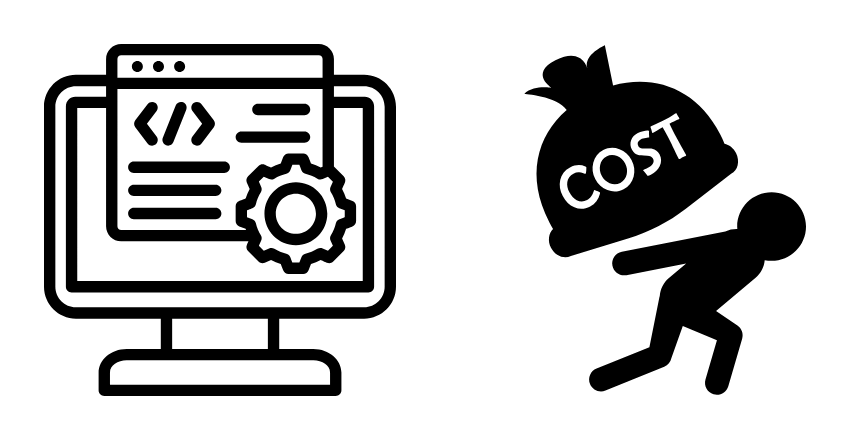When your startup secures Series A funding, growth is the name of the game. You’re under pressure to scale your product and operations, especially your development team. But hiring locally can be expensive and slow. That’s where nearshore outsourcing, particularly in Brazil, comes in.
Why Scaling Your Dev Team Quickly Matters in Series A

Securing Series A funding is a huge milestone. It signals that you’ve moved beyond the idea stage you’ve proven that your product has potential. Investors now trust that you can scale the business and deliver higher revenue. However, with that trust comes pressure. You have to move fast, and scaling your development team is one of the most critical aspects of meeting this challenge.
1. Meeting Investor Expectations
Investors don’t just give you millions of dollars and wait around for years to see results. They have high expectations and timelines. After securing Series A, you’ll likely have board meetings and progress reviews where they’ll be watching your key metrics, such as:
- Monthly recurring revenue (MRR) growth
- User acquisition rates
- The development and launch of new features
- Your product’s stability and scalability
If you can’t meet these expectations, you risk disappointing your investors and making future funding rounds harder to secure. Scaling your dev team quickly allows you to build and improve your product at a pace that satisfies stakeholders.
2. Beating Competitors
You’re not the only startup in your space. Series A funding often signals a “green light” to competitors that your product is gaining traction. They’ll accelerate their own efforts to stay ahead of you. If your team is too small, it can’t keep up with the demands of rapid iteration and product development.
Consider this scenario: If a competitor releases a major feature that customers love, but you’re stuck in development limbo because of a hiring bottleneck, you’ll lose ground fast. Momentum is everything in the startup world. Scaling your dev team allows you to maintain or even gain an edge by:
- Launching new features ahead of competitors
- Fixing bugs and improving product performance quickly
- Enhancing user experience to retain and attract more users
Simply put, being slow in a competitive market is a recipe for failure.
3. Scaling Product Features and Infrastructure
As your user base grows, so do your product’s technical demands. A small dev team that handled your early-stage startup might be overwhelmed by the need to:
- Add new features users request
- Optimize the backend infrastructure to handle increased traffic
- Improve security and data protection as you collect more sensitive user data
- Maintain system stability to prevent crashes or downtime
Without a larger team, your product could stagnate or face performance issues. For example, slow loading times or bugs can frustrate users and lead to churn. Users expect constant updates and improvements, especially in a tech-driven market. To meet these demands, you need to expand your development capacity quickly.
Why You Can’t Afford a Slow Hiring Process
Hiring developers locally can be a painfully slow process. You might need months to post job ads, screen resumes, conduct interviews, and negotiate offers. And once you find someone, there’s still onboarding and training before they’re fully productive.
This delay could cost you valuable time in the race to scale your product. That’s why many startups turn to nearshore outsourcing. Brazil, in particular, offers a sweet spot with:
- A large pool of experienced developers
- Time zone alignment with the U.S., making real-time collaboration easy
- Competitive rates compared to U.S. salaries
By partnering with a nearshore team in Brazil, you can skip the long hiring process and quickly onboard skilled developers. This allows you to focus on growth and product improvements without compromising on quality or speed.
Scaling fast isn’t just a luxury it’s a necessity in the high-stakes world of Series A startups.
What Is Nearshore Outsourcing?

Nearshore outsourcing involves hiring teams from nearby countries that are in a similar time zone. In this case, Brazil is an ideal nearshore option for U.S. companies.
Nearshore vs. Offshore vs. Onshore
- Onshore: Hiring developers locally within your country.
- Offshore: Hiring from distant countries, like India or Eastern Europe, often with significant time zone differences.
- Nearshore: Hiring from neighboring regions, like Latin America, where time zones align closely with your own.
Nearshore outsourcing strikes a balance between cost, communication, and speed.
Why Choose Brazil for Nearshore Development?
Brazil stands out as one of the top nearshore outsourcing destinations.
1. Large Talent Pool
Brazil has a rapidly growing tech sector with thousands of experienced software developers. Many specialize in programming languages like Python, JavaScript, and Java—skills your startup needs to scale.
2. Aligned Time Zones
Brazil’s time zone overlaps with many U.S. time zones, making real-time collaboration easy. No more staying up late to sync with offshore teams.
3. High English Proficiency
Many Brazilian developers speak fluent English, reducing communication barriers. Clear communication helps your team move faster without misunderstandings.
4. Competitive Costs
While not as cheap as some offshore options, Brazil offers affordable rates compared to U.S. salaries. You save money without sacrificing quality.
How to Build a Nearshore Team in Brazil

Scaling your dev team with Brazilian talent involves a few key steps. Here’s how to do it right.
1. Define Your Team Needs
Start by identifying the roles and skills your product needs. Are you looking for front-end developers, back-end specialists, or full-stack engineers? Having a clear plan speeds up the hiring process.
2. Find a Trusted Partner
Partnering with a nearshore staffing agency or development firm in Brazil can streamline hiring. These partners already have vetted talent networks and can match you with developers quickly.
3. Interview and Assess Candidates
Even with a partner, take the time to interview developers. Assess both their technical skills and cultural fit with your existing team.
4. Onboard the New Team Members
Proper onboarding is crucial. Introduce your new developers to your company’s tools, processes, and team culture. This helps them hit the ground running.
5. Maintain Strong Communication
Use collaboration tools like Slack, Jira, or Zoom to stay in sync with your nearshore team. Regular stand-ups and check-ins ensure projects stay on track.
The Benefits of Scaling with a Nearshore Team
Working with a nearshore team brings multiple advantages beyond just faster hiring.
1. Faster Time-to-Market
With a larger development team, you can build and launch new features faster. This keeps your users engaged and loyal.
2. Reduced Burn Rate
Series A funding won’t last forever. Hiring nearshore developers at competitive rates helps you stretch your budget without compromising productivity.
3. Access to Diverse Perspectives
Hiring from Brazil brings fresh perspectives to your product development. Diverse teams often create more innovative solutions.
Challenges to Watch Out For

While nearshore outsourcing has many benefits, there are some potential challenges to manage.
1. Cultural Differences
Even with strong English skills, cultural differences can affect work styles and communication. Take time to understand your nearshore team’s culture.
2. Legal and Contractual Issues
Working across borders involves legal considerations. Ensure you have solid contracts in place to protect your intellectual property and clarify terms.
3. Finding the Right Talent
Not every developer will be a perfect fit. Be prepared to invest time in interviews and skills assessments.
Best Practices for Managing a Nearshore Dev Team

Here are some tips to make your nearshore collaboration smooth and productive:
1. Set Clear Expectations
Define roles, responsibilities, and deadlines upfront. Clear expectations prevent misunderstandings and delays.
2. Foster Team Culture
Make your nearshore developers feel like part of the core team. Involve them in team meetings and social events.
3. Focus on Outcomes, Not Micromanagement
Trust your nearshore team to deliver results. Focus on key milestones and deliverables rather than micromanaging daily tasks.
Key Tools for Managing Nearshore Teams
The right tools make remote collaboration seamless. Consider these popular options:
- Slack: Real-time messaging for quick updates and discussions.
- Jira: Task and project management to track progress.
- Zoom: Video conferencing for team meetings and one-on-ones.
- Google Workspace: Shared documents, calendars, and email for smooth collaboration.
Is Nearshore the Right Move for Your Startup?
Nearshore outsourcing isn’t for every startup. If your team struggles with remote collaboration or you require in-person interaction, it might not be the best fit. However, if you’re ready to embrace global talent, Brazil offers a compelling solution.
Scaling your dev team fast after Series A funding is crucial to keeping up with growth and investor expectations. Nearshore outsourcing in Brazil gives you access to skilled developers, real-time collaboration, and cost savings.












